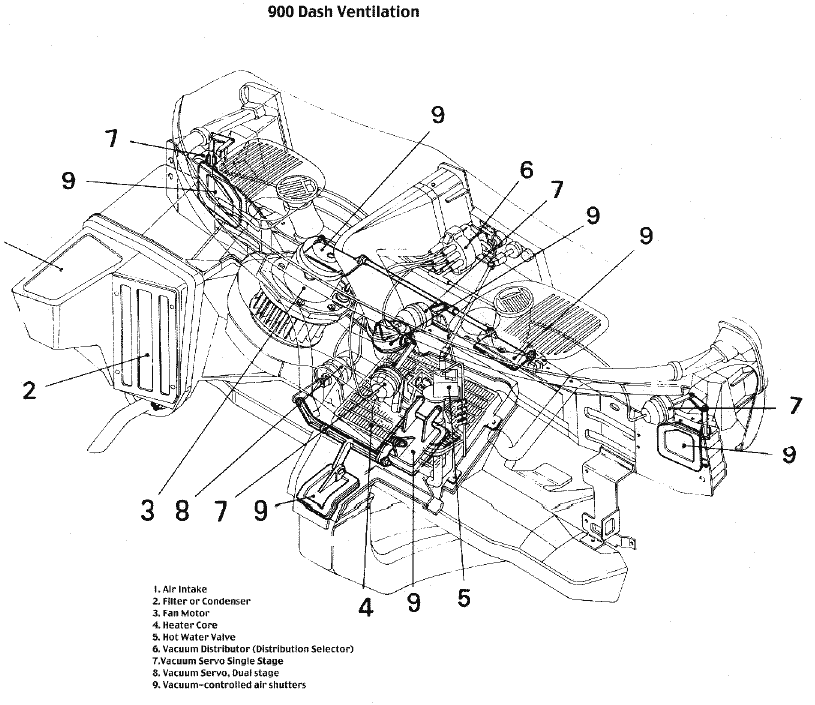

A good way to trace for vacuum leaks is to remove the radio and go directly to the vacuum hose gang where it attaches to the selector switch. Unplug the gang from the switch by releasing the tabs and pulling the gang off. With the engine running, make sure you have vacuum coming to the gang. If not, trace the vacuum back to the source. It will run from the gang to a nipple underneath the right dash under the evaporator box out into the engine compartment. From there it goes to the vacuum canister located on the right fender.( In the trunk on Convertibles) This canister maintains a reserve vacuum so that when the engine is not making vacuum (under acceleration or boost) there is sufficient vacuum to run the servos. It has a check valve made into it on the vacuum in side. If this check valve fails, you might loose the center vents or any ventilation distribution control under acceleration and usually have a noise from it as well. If the check valve fails, replacement of the canister is not really necessary, you can just add a check valve in front of it in the line. Install such an replacement valve so it allows you to suck from the line going into the canister, but not blow into the canister. Check the canister by blocking one end of its vacuum lines and sucking on the other line. The canister should hold vacuum. The check valve should allow you to suck from the canister but not blow into it. it should also cause the vacuum in the tank to stay there, not releasing to the atmosphere when the line is removed from it. Trace this line back to the intake manifold on the left side of the engine near the brake booster. NOTE: there will be two lines running under the evaporator housing, one is the vacuum into the selector switch. The other is vacuum from the selector switch back out to the servo to operate the fresh air/recirculation flap on top of the evaporator box.
Anytime the center vents do not blow when MAX is selected, suspect a vacuum problem. The center vents demand the most vacuum to operate and are the first to go out when there is a problem. While you are tracing the vacuum lines, look for pinched or crimped places in the lines as well as holes or cracks.
If you have vacuum to the hose gang at the selector switch, you can make a simple test jumper from a spare piece of vacuum line and the ends of two ink pens with tapers that you cut or take apart. Put the line over the square end of each piece of the pen and use the tapered ends on the pins to fit in the hose gang connector. Stick one end of the "jumper" into the hole on the gang with vacuum and the other end into individual holes going to each vacuum motor until you find the line with the leak and trace it from there. Using this vacuum switching method makes it easier to isolate which line runs where. Just check the ends for vacuum. Also if there is a leak in the line, putting vacuum on that line will cause it to make noise making it easier to find the hole in it.
If all the lines check out good, suspect the vacuum switch itself. It is not uncommon for them to leak. Noise from them is usually apparent when they are leaking though.
All the vacuum motors are accessible by removing the speaker grills and the radio except for the floor vents. You can get to those by removing the floor ducts and under dash panels.